For parents, carrying their child on one hip is a movement so natural, it’s almost automatic. In terms of babywearing, this position is less common in comparison to carrying in the front or back, although it has several advantages. For example, it allows parents to keep an eye on their child at all times and allows the use of baby carriers and wraps that are quick to put on like, among others, the ring sling. In this article, we’ll explore in detail what the hip carry is, its advantages and how to do it safely and comfortably.
I) What are the advantages of the hip carry?
Generally speaking, the hip carry has all the advantages that come with babywearing like contributing to your bond with your little one, promoting your baby’s healthy development, becoming more autonomous as a parent, etc. We have a more complete exploration of the benefits of babywearing here.
In addition to all of these, the hip carry is a natural position for parents since most of us intuitively come to it. Unlike carrying on your back, with the hip carry you get to have one hand free to do tasks or care for your baby. If you are breastfeeding, the hip carry will make your things easier by holding your baby against your breast. To learn more on breastfeeding, read our article Breastfeeding While Babywearing: How to Do It and Why.
Finally, this position allows the baby to satisfy his curiosity and grants him more freedom of movement, which is very reassuring to him as he can snuggle up against your shoulder when he feels the need to. It's a soothing position where it’ll be easy for him to quickly fall asleep in.
II) What are the limitations of the hip carry?
Every carrying position answers specific needs but isn’t ideal for everything we do in a day. For example, when carrying on the hip, it’s absolutely necessary that the child has strong postural control. Typically, children start having good postural control around their 5 or 6 months. A sign that your baby is ready for the position is that he’s able to catch his own feet or put himself in the ‘’frog’’ position.
The hip carry can become uncomfortable to the carrier due to being an asymmetrical position, which makes it impossible to use for long periods at a time. Babywearing is made much more comfortable with a better weight distribution.
Our recommendation would be to switch between carrying positions to take advantage of the benefits of each position. Luckily, many baby carriers and wraps allow this! Keep reading to learn about it.
III) Which baby carriers are best for the hip carry?
Several baby carriers and baby wraps will let you try it out:
Choice #1: The ring sling
This model resembles a small hammock with two rings on one side. You can use it for the hip carry no matter the baby’s weight. Its main advantages are its ease of use and low price. It also exists in a breathable mesh version as the Ring sling Air-O.
Choice #2: The woven wrap
Versatile, it allows for many carrying positions, one of which is the hip carry based on the cross carry. With no maximum limit on the baby’s weight, the baby wrap offers a perfect support and unbeatable physical contact to your baby. Ready to try it?
Choice #3: Structured baby carriers:
A vast number of Chimparoo’s structured baby carriers allow the hip carry, such as the EvöAir bblüv, the PöpNgo and the Multi 2.0. These models don’t need you to choose a single carry position. Their versatility is why we love them!
Choice #4: The Mei Tai:
Discover the perfect compromise between baby wrap and baby carrier. The Mei Tai is capable of 6 carrying positions, including the hip carry, and can be adapted to children of all ages.
IV) How should the hip carry be done?
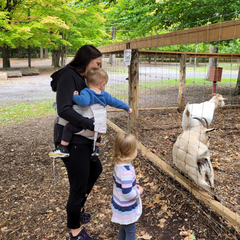
This is a position limited to children with good posture and you will need to obey the principles of physiological babywearing. To do the hip carry, the child’s bottom needs to be lower than his knees. Take a look at these instructional videos to help you with the hip carry using different carrier models: The Multi 2.0 baby carrier, the Mei Tai MAX, the EvoAir and the ring sling.
Do you still have questions on the hip carry? Our specialist and founder of Chimparoo, Christine Duhaime, can help you. You can contact her directly by writing at info@chimparoo.ca.
*******
So, will you try out the hip carry? With its many advantages, the position deserves the attention it gets. Try it, you’ll love it! Share your experience of the hip carry with parents of the babywearing community directly through our Facebook page or our page Instagram.
We’ve got more resources to help you with learning how to carry your baby:
- The videos on our YouTube channel will give you great demonstrations and advice.
- Several of our blog's articles will allow you to dig deeper in the topic of babywearing like our texts on babywearing a newborn, the different ties and carries you can do with a baby wrap and how to ensure safety while babywearing.
- Our FAQ filled to the brim with tips and advice. Feel free to look it up, chances are someone else has already asked a question you want answered!

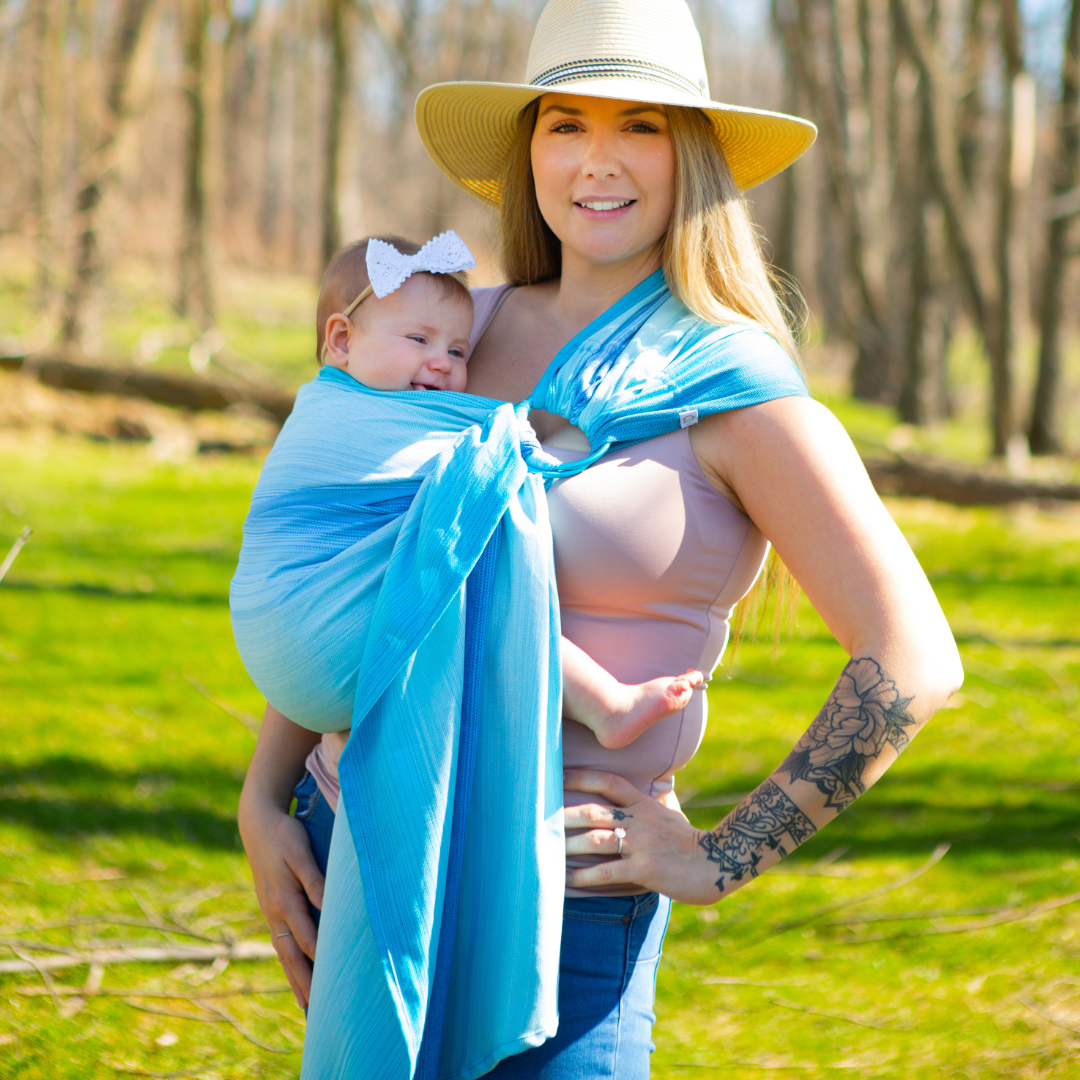
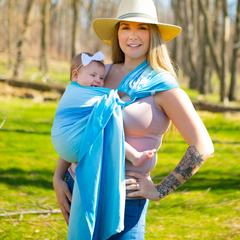
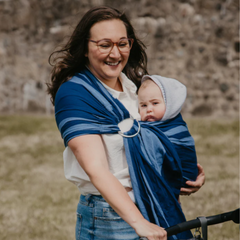
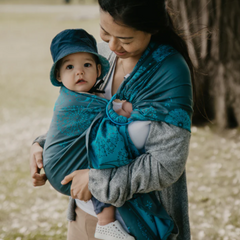

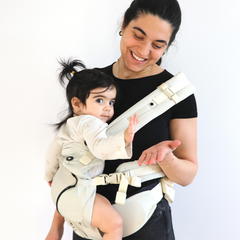

Share:
3 Steps to Master Physiological Babywearing
How Can You Soothe Your Crying Baby?